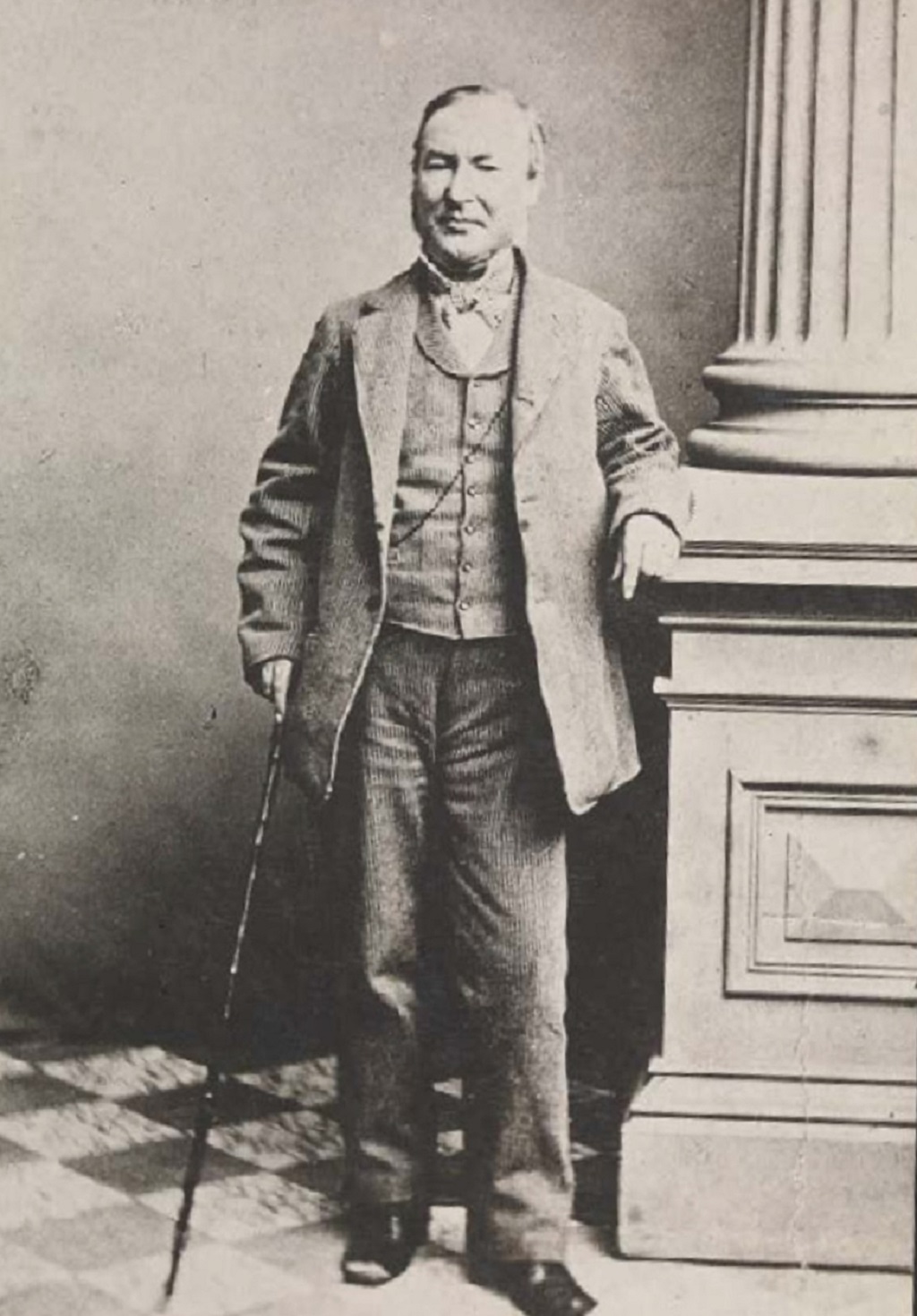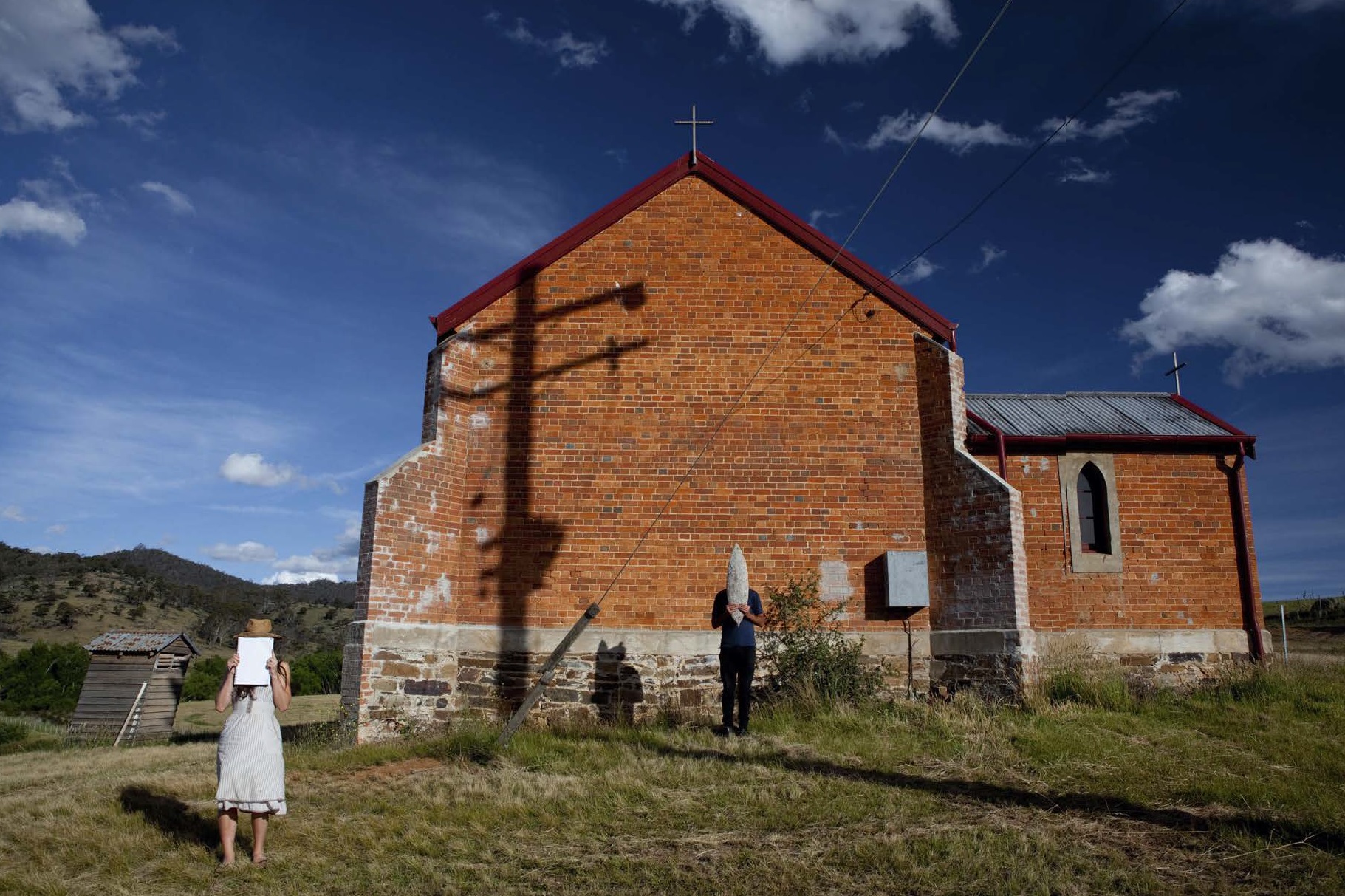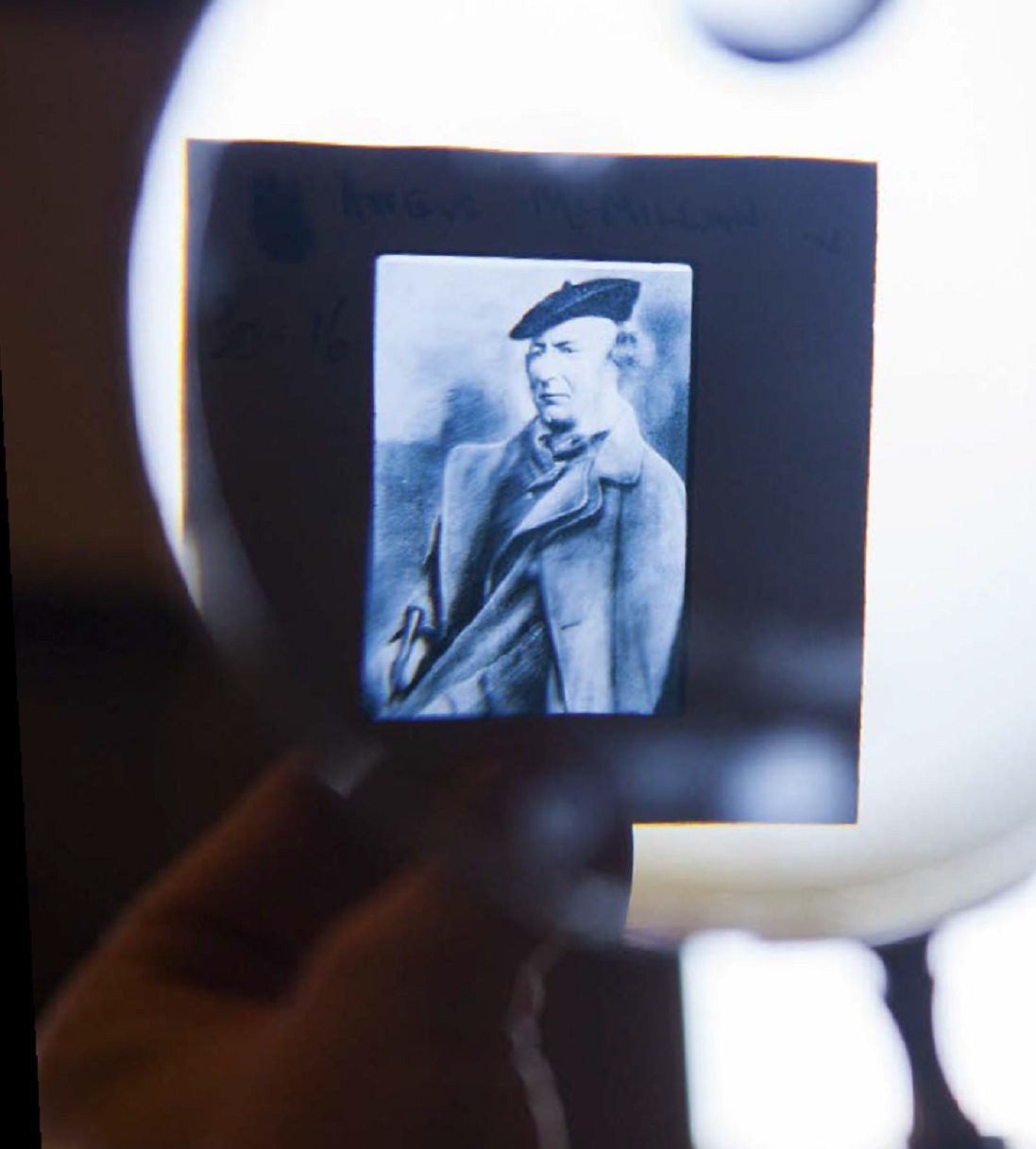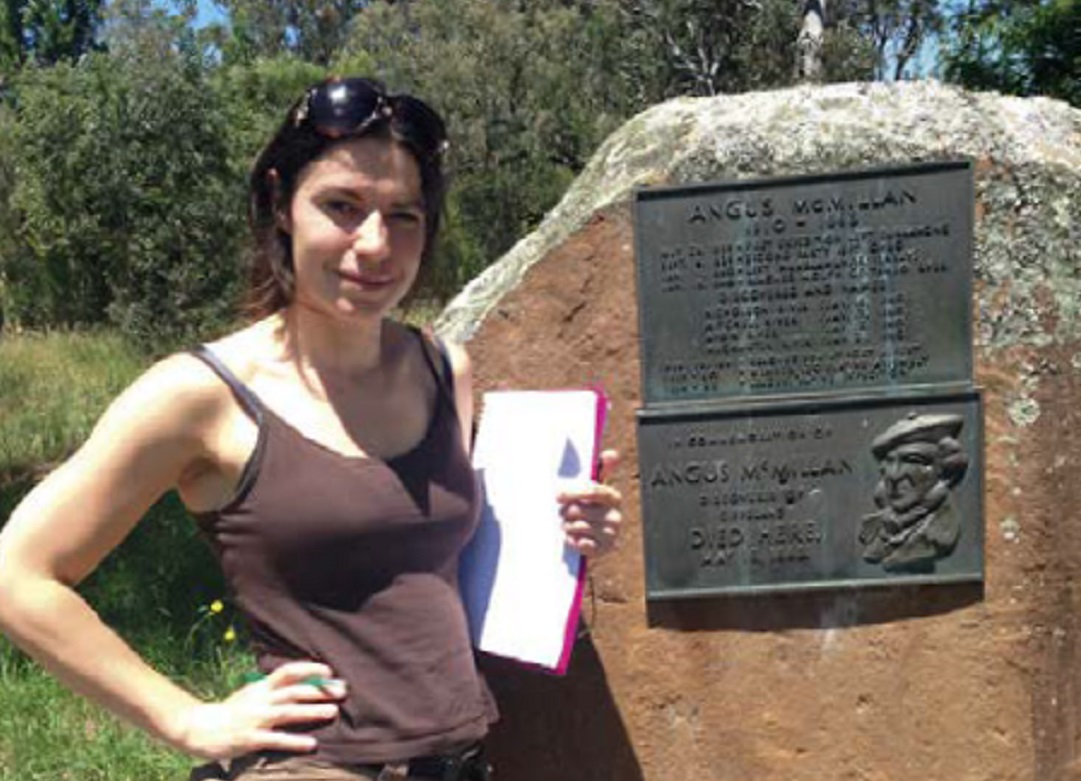
When you discover a murderer in the family
When writer Cal Flyn discovered the dark secret in her family’s past it started a long but cathartic investigation.
In the summer of 2011 I made a discovery about my family history that has dominated my work and thoughts ever since.
I learned that I was the great-great-great niece of Angus McMillan, who left Scotland during the Highland Clearances to emigrate to Australia.
He became a noted explorer and the foremost pioneer of an area near Melbourne called Gippsland, where he is celebrated by a series of cairns, has an electoral district plus several parks and countless streets named after him.
He also, it has been revealed recently, acted as the ringleader of a number of gruesome massacres of the local indigenous people, the Gunai.

Angus McMillan – explorer, pioneer and mass murderer
McMillan has been linked to a number of ruthless attacks, some so brutal that their sites have been synonymous with death ever since. Boney Point, for example, on the shore of Lake Wellington.
But the bloodiest episode – indeed, one of the bloodiest in Australian history – took place at Warrigal Creek in 1843 when, as revenge for the murder of a prominent settler, McMillan gathered an angry militia and set upon an unsuspecting encampment where they killed every man, woman and child they saw. In all, somewhere between 80 and 200 Gunai people were slaughtered that day.
Other assaults, attributed to McMillan or his peers, would take place over the subsequent decade with more gory place names pointing to their locations: Skull Creek, Butchers Creek, Slaughterhouse Gully. In some cases these monikers are nearly all that is known of the crime. Killing Aboriginal people was illegal in Australia at that time, punishable by death, and therefore kept deadly secret by those who took part.
Nevertheless, it was widespread, and referred to in whispers and in smirking euphemisms. Diaries of the time refer to the ‘disciplining’ of the Gunai, or their ‘dispersal’. What is clear is that within a decade, a culture that had existed in Gippsland for tens of thousands of years was nearing extinction.
This discovery was, for me, a momentous one. I was appalled to feel myself linked to scenes of such destruction. And it too made me question many of the assumptions I often make about my Scottish heritage.

Cal and Aboriginal artist Steaphan Paton, a member of the Gunai and Monero Nations, in Corrowong
It is true that we have, as a people, often been the historical victims of colonialism – most clearly perhaps in the Highlands and Islands where Gaelic culture was suppressed and thousands were forced from their homes during the Clearances.
But the Scots also had among their number some of the most enthusiastic proponents of the British Empire. Some fled or were forced from their homeland, only to enact even more brutal clearances upon indigenous populations in the New World and here was an arresting example in my own family tree.
I found myself deeply unsettled by what I had learned. I couldn’t forget it.
So in 2013, having stewed on these revelations for months, I decided to go to Australia to investigate the true legacy of McMillan. What had been the long-term effect upon the Gunai people? In what state was the tribe today? Would they speak to me, or turn me away?
To the Gunai people, McMillan had never been a local hero. Instead he had become a symbol of their suffering, their dispossession. To them he was, as Uncle Albert Mullett a prominent elder told me, ‘a butcher’. And it was true: he was a butcher. But once I made clear that I was willing to listen, and had not come to clear my relative’s name, I found that our ancestral animosities did not preclude a present-day friendship; I was welcomed graciously by a community who want the truth to be known and discussed.

Family research in a private archive in Melbourne
Uncle Albert’s son Ricky, now the head of the local Aboriginal corporation, met me for lunch in Bairnsdale, a town at the heart of the flat, fertile land that has been home to the Gunai for millennia. McMillan saw it for the first time in 1839.
His arrival heralded the ruin of the Gunai. During the 1840s, with the new white settlers and Gippsland’s traditional owners in a state of unofficial war, the Gunai population fell by more than 90%, from 1,800 (a conservative estimate) to little more than 100. As one settler wrote of the Gunai: ‘No wild beast of the forest was ever hunted down with such unsparing perseverance.’
Ricky took me on a tour of the sites of these massacres, some deep in the Gippsland countryside in the bends of slow moving creeks, carpeted with the curving, fallen leaves of the eucalyptus trees. ‘Beautiful,’ he acknowledged, ‘but stained.’
After the violence died down, the diminished Gunai were subjected to a raft of devastating assimilation policies over the subsequent decades which sought to erase their culture entirely. They were confined to religious missions, banned from practicing tribal customs and separated from family members.
Today they are no longer subject to discriminatory laws, but the legacy has been profound and long-lasting.
Like many Aboriginal groups in Australia, the Gunai now struggle with poor health, poor literacy and high rates of addiction, poverty and domestic violence. They also suffer near endemic levels of racism.
The Aboriginal incarceration rate in Victoria is almost five times higher than the average and the infant mortality rate double that of the non-Aboriginal population. Reports of domestic violence against Aboriginal people in the state – predominantly women and children – has tripled over the last decade.
I visited Lake Tyers, an Aboriginal township in what was once a Christian mission set up to ‘civilise’ the Gunai population. After it closed many families stayed on, it being the only home they had ever known, and they were awarded the title to the land in 1970 after a seven-year campaign.

A plaque at Iguana Creek marks the spot where in 1865 Angus McMillan is said to have fallen, after being rolled on by a pack-horse, and subsequently died
But this small community has struggled with social problems and in 2003 was taken over by state-appointed administrators after alleged widespread drug use and sexual abuse. The future for the community is not clear. Despite improvements, there is no imminent prospect of a return to self-governance.
The scale of the problems faced by the Gunai community is overwhelming. As an outsider, looking in, it seemed obvious this was a result of the long-term consequences of the actions of McMillan and his peers; the generation that hunted the Gunai like wild beasts and took the land for themselves.
In many ways, the picture in Gippsland mirrors that of Australia more broadly and much of the colonial world.
A great number of Brits, like me, have a troubling heritage to reflect upon.
There are no easy answers about how we can right the wrongs of the past. I cannot undo the actions of McMillan or anyone else.
But the exercise of uncovering and understanding the past – even its darker elements – is an important one, no matter how painful. I take solace in the new friendships I have made and find in them a source of hope that meaningful reconciliation between our two peoples is not only possible, but probable.
Thicker than Water by Cal Flyn is published by Harper Collins, £16.99. www.calflyn.com
(This feature was originally published in 2016)
TAGS

